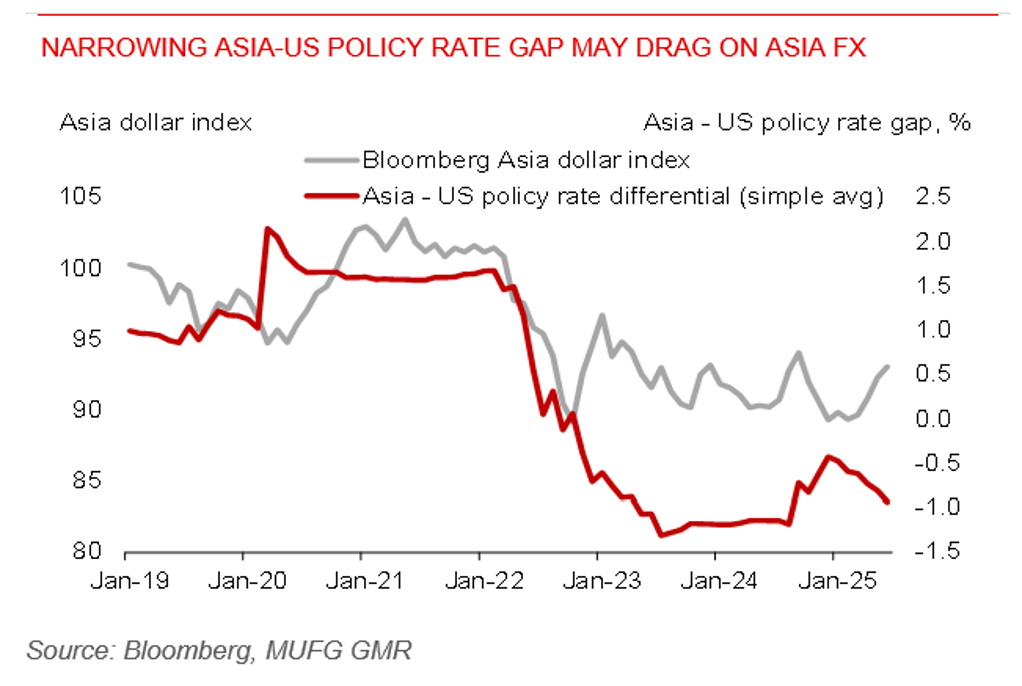Week Ahead FX outlook:
Key FX views:
- The de-dollarisation move in April appears to have stalled for now. Asian currencies have come under renewed pressure, as the US dollar begins a nascent recovery. This has been driven by President Trump’s announcement of new reciprocal tariff rates on trading partners and supported by largely resilient US economic data. The latest US Treasury data shows that net foreign portfolio inflows to the US have surged to $311.1bn in May following $14.2bn in net outflows in April.
- Beyond tariffs, factors such as yield differentials and positioning adjustment may further lend support to the USD in the near term. Yield differentials have not been driving USD/Asia in recent months, but it may still come back into market focus. Asia’s yield differential versus the US has narrowed, as the Fed holds rates steady while most regional central banks ease policy to support growth. We still expect further rate cuts across Asian economies, which could pose a near-term drag on regional currencies. The key concern now is the downside risk to growth, driven by a more challenging external environment.
- Asian central banks have turned more dovish. Notably, Bank Indonesia cut rates by 25bps to 5.25% and signalled a more dovish stance, while it attempts to balance rupiah stability and the need to support growth. Bank Negara Malaysia also lowered rates by 25bps this month after a prolonged pause, in a pre-emptive move to counter tariff headwinds following Trump’s announcement of a 25% reciprocal tariff rate on the country.
- However, the broader narrative of USD weakness likely remains intact. We anticipate the Fed to resume rate cuts from September, which could help provide some offset to the negative tariff impact on Asia’s growth. The de-dollarisation theme may also re-emerge, especially if Trump intensifies global trade tensions.
Narrowing Asia-US policy rate gap may drag on Asia FX

